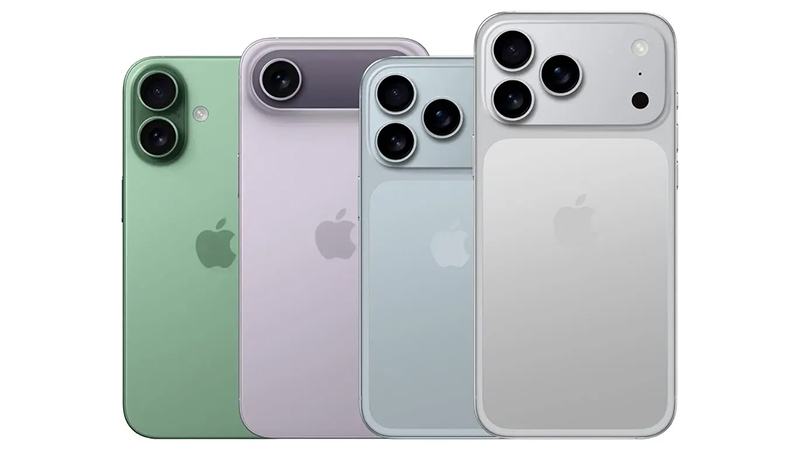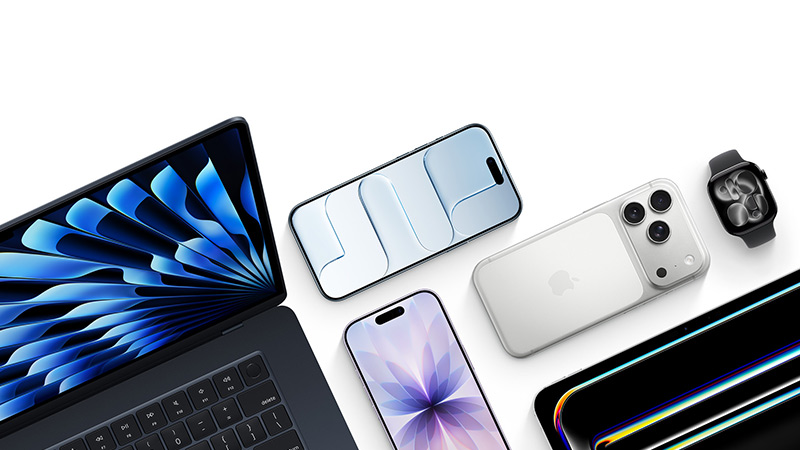In the large language model (LLM) race, Apple is far from being into the competition.
In a war sparked by the launch of OpenAI's ChatGPT, the tech industry rushed to develop advanced AI systems. Companies raced to integrate AI into their devices and services, aiming to outpace one another. Apple, however, took a different approach.
Its original plan, was to introduce a fully AI-powered assistant, but that effort was delayed.
Rather than admitting the setback, Apple leaned into a backup plan: its established strategy of emphasizing hardware, design, and incremental software improvements.
This approach was evident during the iPhone 17 series launch.
Apple unveiled the iPhone 17, iPhone 17 Pro, iPhone 17 Pro Max, and the ultra-thin iPhone Air, while AI features barely made an appearance.
The Plan B works.

During the "Awe Dropping" event, Apple focuses on introducing subtle design updates, with the spotlight reserved to the iPhone Air, which is just 5.6mm thick. This makes it the slimmest iPhone ever, emphasizing portability without compromising durability.
Despite its slim profile, it packed impressive features, including the new N1 wireless networking chip supporting Wi-Fi 7, Bluetooth 6, and Thread, along with the C1X cellular modem designed by Apple.
Performance improvements were clear for the iPhones. The A19 chip boosted processing speed and graphics performance, while the camera system benefited from the Center Stage front camera and a 48MP Dual Fusion rear camera. iOS 26 introduced a redesign that attracted attention even before the devices launched.
In addition to the iPhone lineup, Apple introduced the AirPods Pro 3, which featured improved noise cancellation, five adjustable earpiece sizes, and a live translation feature.
Apple also unveiled the Apple Watch Series 11, which included new health tools focused on hypertension detection and sleep improvement, along with the Apple Watch Ultra 3 and Apple Watch SE 3, offering enhanced features and performance.
The new Apple Watches were designed to provide users with more comprehensive health monitoring capabilities.
Long story short, Apple is highlighting enhancements to some of its most well-known products that consumers could immediately see and experience.
Apple made minimal mention of its AI developments, including the lack of progress on overhauling Siri, which has drawn criticism for lagging behind competitors like Google.
By centering on tangible improvements, Apple made its fallback plan feel like a deliberate, carefully executed strategy.
Apple presented the iPhone 17 series and other hardware without the AI people were hoping to have, as if it had been its plan all along.
Apple introduced Apple Intelligence in 2024, which added on-device AI capabilities, including text summarization, image generation, live translation, and content analysis.
The anticipated AI-enhanced Siri, which would have represented Plan A. But unfortunately for Apple, it was not ready for launch.
It was a far cry from rivals, and was far from polished. It lacked the credibility and the ability. It failed in way too many segments that the original Apple Intelligence was a considered a botched product
Instead of framing this as a failure, Apple positioned its devices and Apple Intelligence features as the natural progression of its ecosystem, subtly reframing Plan B as if it had been the intended path all along.
The effectiveness of this strategy lies in Apple’s strengths: hardware quality, design, and usability.
By emphasizing improvements users can immediately interact with, Apple maintained the appeal of its devices without over-promising AI features. Potential collaborations with third-party AI providers, like Google Gemini, may eventually supplement Siri, but for now, the combination of design, performance, and incremental AI delivers a compelling experience.
The Awe Dropping event shows that Apple’s backup plan works.

Apple even quoted Steve Jobs's saying, which says:
While competitors focused heavily on AI and rushed to fix flaws as they appeared, Apple redirected attention away from the AI hype people expected from its products, by emphasizing design refinements, build quality, and performance enhancements instead.
Apple has always prioritized experiences that are functional, secure, and immediately valuable.
When it initially tried to chase AI like others, its original Plan A, it ran into challenges. By presenting Plan B as a deliberate strategy rather than a fallback, Apple maintained its reputation and kept consumers engaged.
This approach demonstrates that success in the AI era doesn’t require being first to market with a fully AI-powered assistant. By focusing on hardware improvements and gradually integrating AI, Apple kept its devices relevant, built consumer interest, and laid the groundwork for future AI advancements, all while framing the fallback plan as the primary strategy.
In perception, Plan B effectively became Plan A.
With Apple stuck to what it knows works, and by making its backup plan appear intentional, it gave the impression that there was no reason to switch paths in the first place.
